In last week’s resource I talked about how what I thought was going to be a one-off course has grown, expanded, and evolved into something even bigger.
I mentioned that in the one year since Sketchbook to Style Boot Camp first launched, I have learned more about art, artists, and art education that all my previous years teaching and making art combined. And I referenced three three major realizations:
- I’m not teaching people how to make art, I’m teaching them how to be artists.
- I’m not a teacher.
- Online art classes don’t work.
Let’s jump into that first realization now! :D
How to Learn to Be an Artist
After Sketchbook to Style had been available for almost a year, I sent out a survey to my students, asking them to discuss their experience with the course. While reading through their answers, I noticed a major difference between this course and other online art courses:
I’m not teaching how to make art. I’m teaching how to be an artist.
If an art class claims to teach you how to draw, paint, sculpt, or make art, what the teacher is really doing is teaching you how they draw, paint, sculpt, or make art. I’ve created and taken many of those classes.
But for the budding artist, those courses can be detrimental.

The Logical Side of Making Art
Most art education focuses on teaching from the logical side of making art. These are the how-to, step-by-step, and lecture-based classes teaching perspective, tone, shading, anatomy, lighting, color science, etc. They cater to the intellectual, logical side of people—the side that likes categories, rules, and proven linear processes.
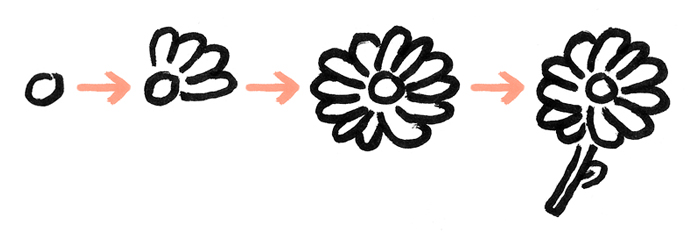
I get it. Teaching and taking those classes is easier. Those classes sell well because they cater to what people want: quick-fixes and simple solutions. Most people really just want to be told exactly how to do something.
But learning to make your original art doesn’t work that way.
This logical method of learning is beneficial when we are very first learning how to draw, but I mean first learning—like how to combine lines and shapes on the page to create things. It’s helpful to know some basic visual literacy. Then, these logical classes are helpful again later on in our journey when we are more comfortable and confident as artists and ready to begin improving our craft and learning new techniques.
But this logical style of teaching will not help you when you are a budding artist. It won’t help you in the part of your journey when you don’t know who you are as an artist.
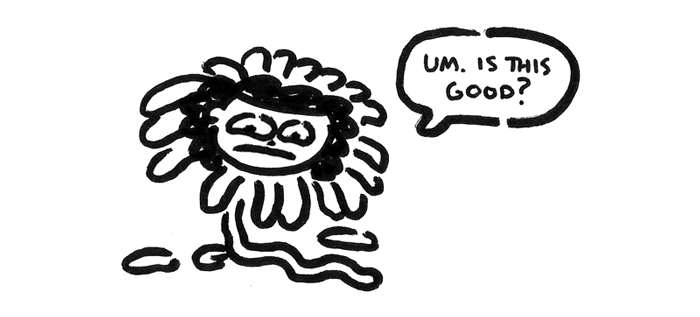
This part of the artistic journey is the most tumultuous and difficult. And I believe continuing to take logic-based courses when you don’t yet know how to make your own original art, will actually hinder and impede your progress and growth as an artist.

We follow rules and copy from the logical part of our brain. But we don’t create new and original art from our logical side. We have to learn to tap into our other side—our creative side.
“Imagination is more important than knowledge.” —Albert Einstein
Obviously, I like my way of drawing best, otherwise I’d be drawing in a different way. But that doesn’t mean it’s the best way for you. You are a different person, and you deserve to make different art.
You deserve the chance to make your own art.
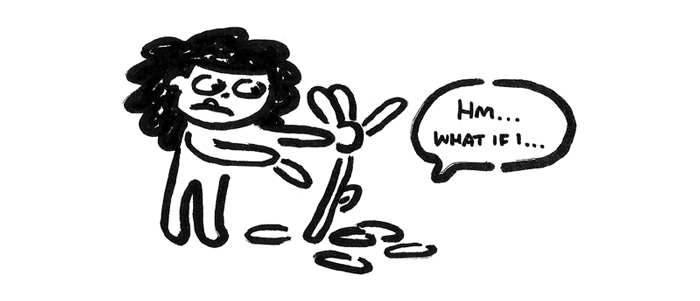
The thing is, I can’t directly teach you how to make your art. No one can. We each only know how to make our own art. But in Sketchbook to Style, I wasn’t teaching students how to draw like me. I was teaching students to discover how to draw like them. And unknowingly to me, in doing that, what they were really learning was something deeper.
They were learning how to become artists.
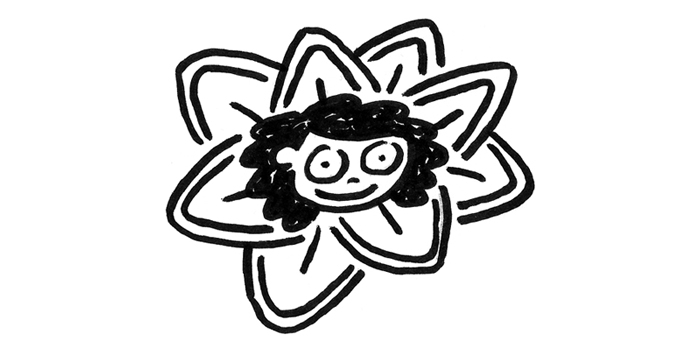
They were moving from the logical side of their brain to the creative side. This part of our brain is the part that can put things together that haven’t been put together before. It’s able to notice patterns and ideate. It’s able to play and experiment. It’s able to embrace ambiguity. It’s able to ignore their inner critic, make mistakes, go deep, and enjoy the process. It’s able to push past what is safe and has already been done before—it’s able to make original art.
In aiming to teach how to discover your artistic style, I’ve actually stumbled onto the process of teaching someone how to become an artist.
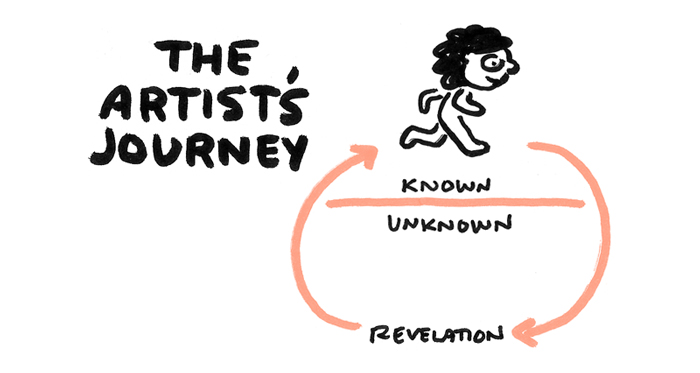
The Common Factors of an Artist’s Journey
Everyone’s journey to becoming an artist is unique and different. If you followed my path exactly, you wouldn’t end up with your unique style, you’d end up with mine. And it wouldn’t quite feel right.
But there are common factors—universal qualities and obstacles—that pop up on everyone’s artistic journey.
While there is no shortcut, magic pill, or secret 3-step system, it IS possible to teach artistic discovery, by focusing on these common factors.
The seeds of these qualities are already inside all of us, but they’re often forgotten, lost, or discarded over the years, usually because we’re never able to get over the common obstacles that are already inside us too.
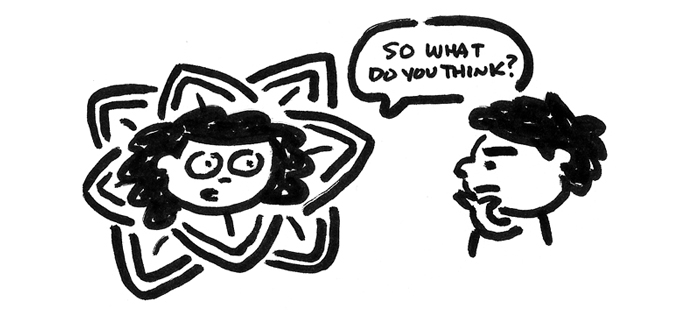
Judging Budding Artists Too Early
Most budding artists begin judging their work far too early on their journey. They expect to be immediately brilliant. They look at their early work and compare it to artists who have been making art for years. They show their early work to critical teachers, parents, or peers, and receive harsh, vague, and debilitating criticism. They worry they’ll never become artists because their ideas aren’t good enough.
Budding artists need to learn that bad work and mistakes are a necessary and critical part of the process. That we cannot aim for perfection, but instead need to focus on growth. We need to accept that our work will be awkward and embarrassing for some time. We have to be willing to be bad. We have to give ourselves a chance. We have to be patient.
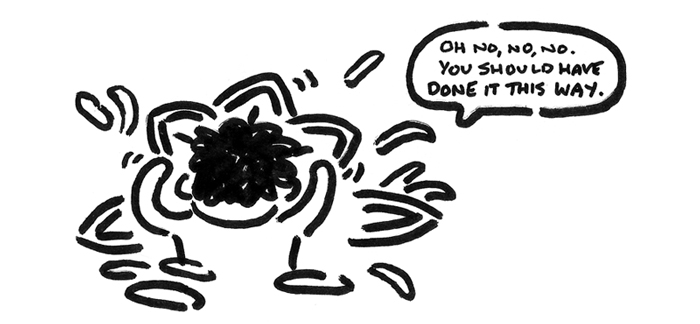
We can’t use our intellectual, logical mind to learn how to be an artist. The intellectual side of us wants to constantly criticize our work, analyzing it for holes and weaknesses.
A budding artists needs to create and build up, not destroy and tear down.

Early work should be celebrated instead of just searched for weaknesses. Letting ourselves stay in an analytical, critical mindset is crippling to the early stages of creation.
We need to learn to be audacious and bold in our art, not scared of mistakes.
We need to be willing to try and fail and experiment. We need to focus on making art, not ripping it up.
Of course, later in the journey, we should look at our work with a critical eye to continuously improve our craft and abilities. But early in our journey is not the time. We have bigger problems to tackle first.

Instead of being told what they should be doing or could have done in response to early ideas and work, budding artists need to hear “why not?” They need to someone to say “yeah, go try it out!” and “sure, that might could work—why don’t you go explore it?” They need encouragement and support.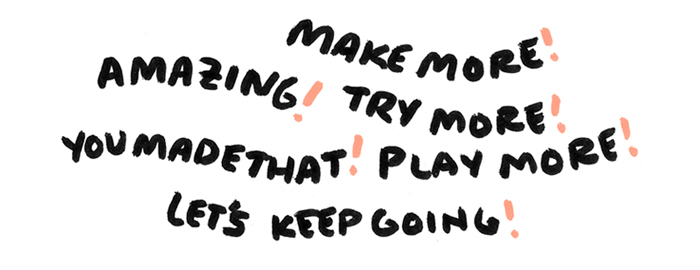
What Budding Artists Need
Artists have different needs as they progress on their artistic journey. The most important thing for budding artists is support and encouragement.
Budding artists need to have their artistic attempts celebrated, regardless of how “successful” they are deemed. We don’t yet know what “successful” means to their art, and they have to figure that out.
Teachers, parents, and spouses try to be helpful to budding artists by offering advice when shown early work. They point out things the budding artist could have done, should have done, or what they would have done. But the budding artist doesn’t need advice at this formative early stage—they need nurturing.
They need someone to believe in them, so they can believe in themselves.
Most budding artists never get this early support. And so, most budding artists never progress in their artistic journey and continue to call themselves as Wannabe Artists, or Aspiring Artists.
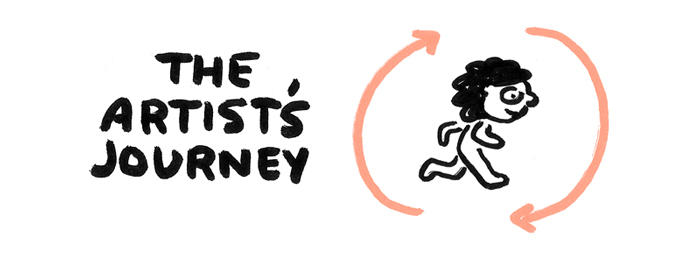
The Common Qualities of an Artist
Once a budding artist has the help of a support base to get over the common obstacles, they can begin to embrace the common qualities of an artists. Learning to be an artist means learning to become more…
Open-minded so you can discover new ideas and connections.
Brave so you can explore your art with less fear.
Present so you can relax and get in the flow state.
Playful so you can let go and embrace uncertainty.
Compassionate so you can overcome your inner critic and creative block.
Self-aware so you can discover and develop your personal style.
Experimental so you can iterate on new ideas and find your voice.
Disciplined so you can commit to a creative habit and practice.
Creative so you can make new connections to form your original ideas.
Knowledgeable about how to visually communicate and compose your art.
Confident to step away from the expected, and drawing in your own way.
Observant so you can see the world around you and make art from it.
Focused so you can abstract complex things to their essence.
Trusting so you can have faith in yourself and never give up.
Learning to draw human anatomy or 3-point perspective might teach you how to make art, but it won’t teach you how to become an artist.
I can teach you to become an artist.

But first, I should bring up my next point: I am not a teacher.
What? That sounds counterintuitive? It is, I know. Next week I’ll be back to explain what I mean. :)
<3,
Christine


